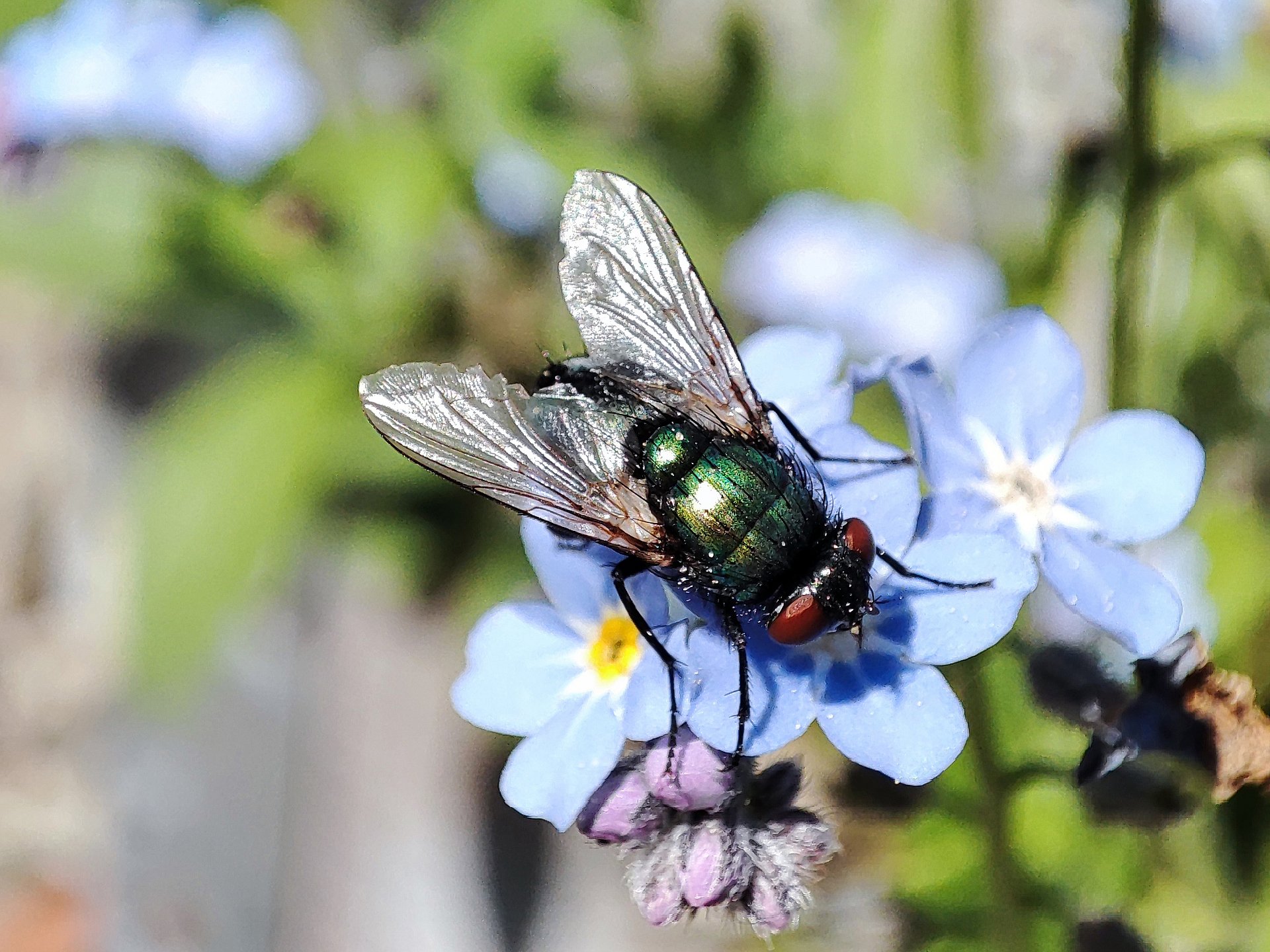Researchers at the Technical University of Munich (TUM) have found that in the early season, insects such as wasps, beetles and flies play a crucial role in pollinating plants in urban environments. Moreover, for biodiversity that is so important, the food supply is more crucial than, for example, land sealing. This gives gardeners a key role in biodiversity and pollination in urban areas.
 Dr. Julia Schmack/TUM
Dr. Julia Schmack/TUM While the interactions between bees and crops have already been well studied, knowledge about the role of other insects in pollination is still limited. In a study, researchers at the Chair for Urban Productive Systems at the TUM therefore observed how different plant and insect species interact. The study was carried out in 30 community gardens in Berlin and Munich, which the team visited monthly from May to August. The results contribute to a better understanding of biodiversity and of how we might counteract its loss in the future.
Underestimated pollinators: wasps, beetles, etc.
Honeybees, wild bees and bumble bees undertake the majority of pollination. However, the researchers found that other insects such as wasps, beetles and flies make a considerable contribution during the early season. This is particularly relevant because plants flowering early in May require pollination, including important crops such as strawberries, but also many wild plants. During this time, these rather inconspicuous species of insects are the most frequent visitors to flowers. "Many of these pollinators are also more robust than honeybees and fly even in poor conditions. Unfortunately, their contribution to the pollination of plants is completely underestimated," explains researcher Dr. Julia Schmack.
Flower diversity is crucial for insects
Before now, there has not been much study of the impact that urbanization and the associated changes in the flower offering and nesting possibilities for insects has on their diversity. In their observations, the researchers noted: flower diversity shows the strongest effects on the biodiversity of the insects. Soil sealing, garden size, quantity of flowers and nest sites have only a small impact. Insect expert Schmack explains: "Cities have great potential to reduce the rate of biodiversity loss by providing habitats for plants and animals."
Insects with different food preferences
In order to better understand the interaction between insects and selected crops and wild plants, the researchers observed their interactions. The insects showed different food preferences. For example, lavender was visited exclusively by bees, yarrow and daisies only by other insects. Other plants hosted a wider spectrum of pollinators. For example, honeybees and wild bees mainly pollinate oregano and marigold. In red clover and dandelion, the research team mainly observed ants and hover flies or ants and beetles. Ants and wild bees are the most common insects to be found in strawberries. For city residents, there is thus great potential for creating more biodiversity through their gardening. Dr. Julia Schmack is optimistic about the results: "By planting specific types of plants, we can design urban spaces in such a way that they have a positive effect on insects," the researcher says.
Schmack, J.M., Egerer, M. Floral richness and seasonality influences bee and non-bee flower interactions in urban community gardens. Urban Ecosyst (2023). https://doi.org/10.1007/s11252-023-01353-9
- The Professorship for Urban Productive Systems focuses on urban agricultural systems. The goal is to explore how productive spaces can be created in cities that provide food, habitat, and community (https://upe-lab.de/).
- The Hans Eisenmann Forum for Agricultural Sciences links around 30 university chairs at the TUM that are oriented towards agricultural sciences. It provides a platform for communication within the university, with external partners from various fields of agricultural science and economics as well as with society (www.hef.tum.de).






